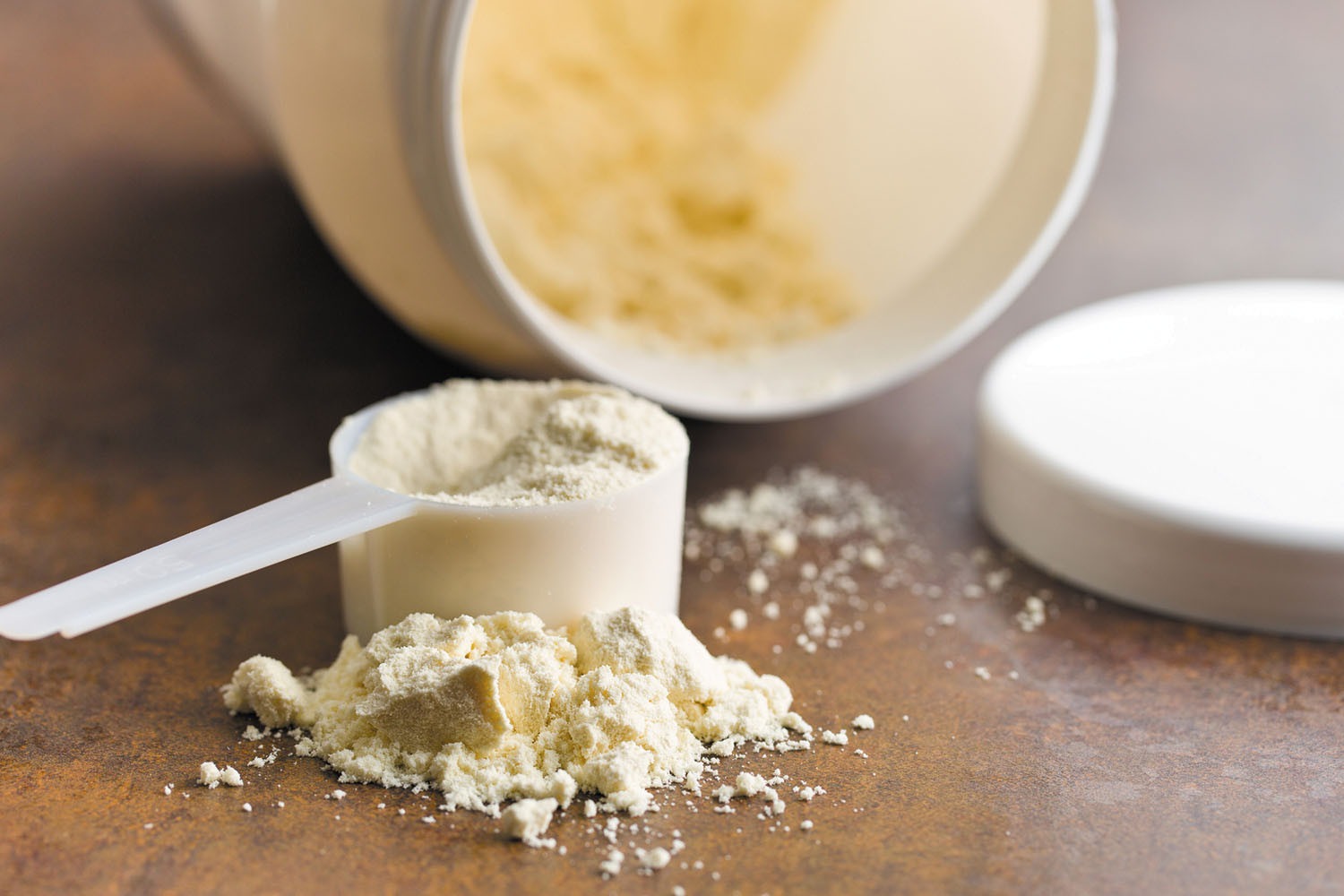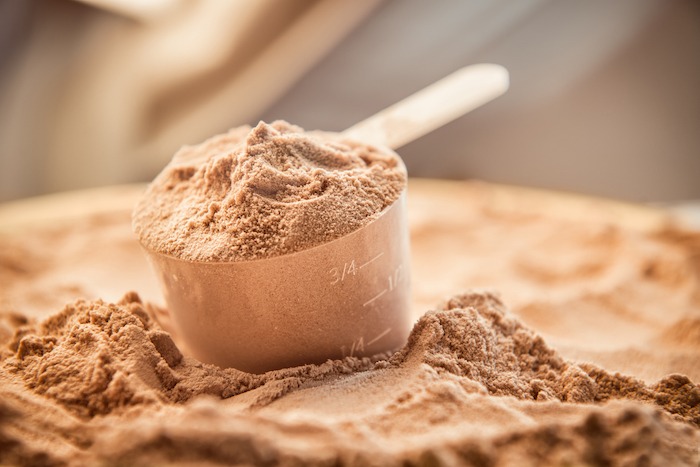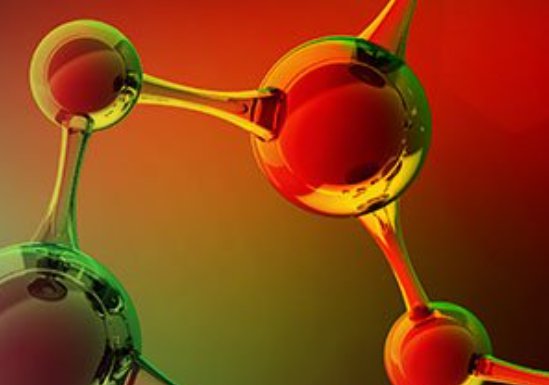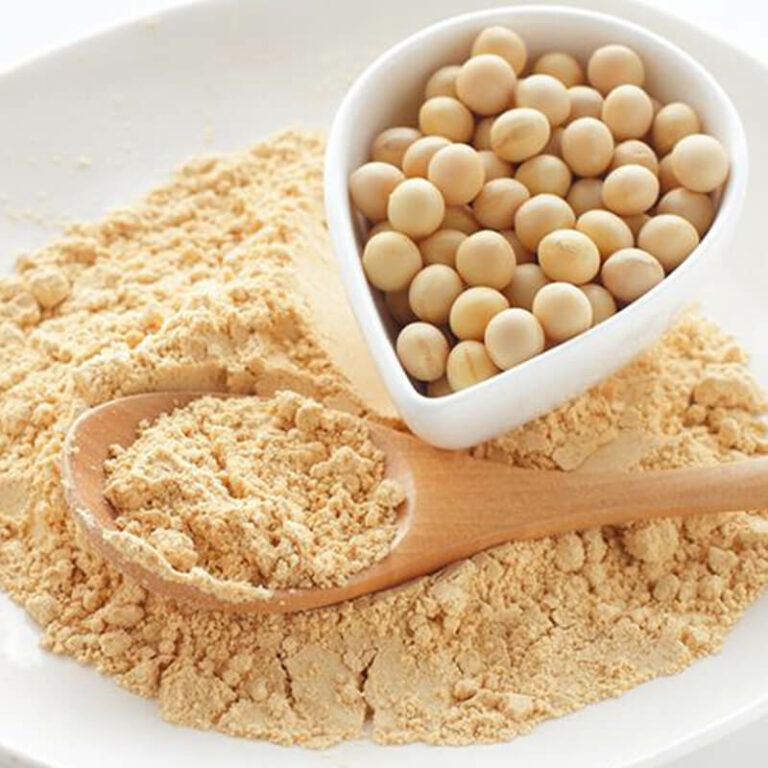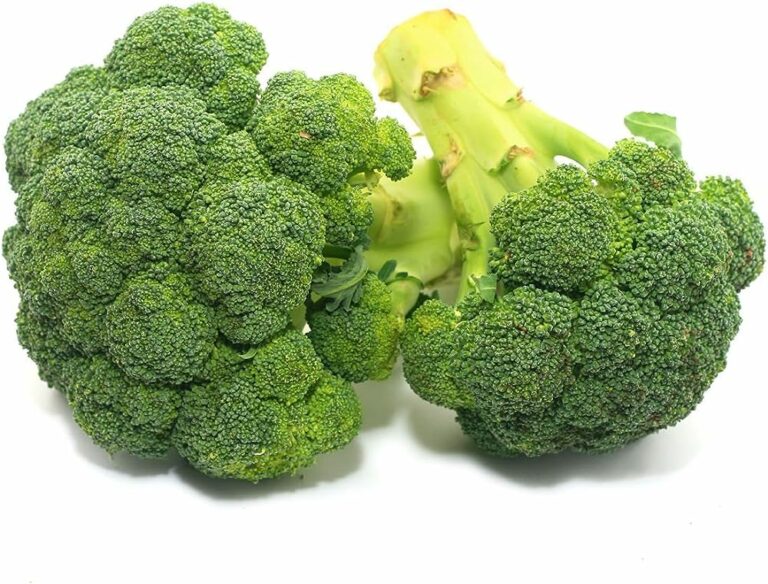The Whey to Muscle Growth – A Comprehensive Guide to Whey Protein Powders
For those of us over 50, staying on top of…
For those of us over 50, staying on top of our fitness game means being smart about our nutrition. We’re not just chasing youthful physiques (though that’s a nice bonus), we’re focused on maintaining strength, mobility, and overall vitality. And protein, as you know, is fundamental to that. Whey protein, with its reputation for convenience and effectiveness, often becomes a tempting shortcut. But is it the right shortcut?
We’ll break down the different types, explore what makes a whey protein ‘high quality’ (and what’s just clever marketing), weigh up the pros and cons, and ultimately, help you decide if whey protein is a friend or foe on your personal bodybuilding journey. No nonsense, just straight-talking, expert advice in plain English – just like we’re having a chat down the gym. Sound good? Let’s get started!
Whey Protein: Decoding the Different Types – Concentrate, Isolate, and Hydrolysate
Right, first things first, let’s get our heads around the three main types of whey protein you’ll encounter: Concentrate (WPC), Isolate (WPI), and Hydrolysate (WPH). Think of them as being on a spectrum of processing, each with its own unique characteristics.
Whey Protein Concentrate (WPC): The Budget-Friendly Option
Let’s start with Whey Protein Concentrate (WPC). This is often the most common and generally the most budget-friendly type you’ll find. Think of WPC as the “least processed” of the whey protein family. It goes through fewer filtration steps compared to isolates and hydrolysates. Now, don’t let “less processed” sound like a bad thing! In some ways, it can be a good thing.
WPC typically contains anywhere from 30% to 80% protein by weight. The rest? Well, that’s made up of carbohydrates (in the form of lactose), fats, and bioactive compounds. WPC is less processed, it tends to retain more of the beneficial nutrients that are naturally found in whey, things like immunoglobulins and lactoferrin, which can have immune-boosting properties. Think of it as a bit of extra goodness thrown in for free.
The Macronutrient Profile of WPC: Generally, a good quality WPC will land somewhere in the 70-80% protein range. This means in a typical 30g scoop, you’re looking at around 21-24g of protein. The carb and fat content will vary depending on the specific product and the protein percentage, but you might see around 4-8g of carbs and 2-4g of fat per scoop.
Taste and Texture of WPC: WPC often has a slightly creamier texture, and a richer flavour compared to isolates. This is thanks to the higher fat and carbohydrate content. Some people prefer the taste and texture of WPC for this reason, finding it more satisfying in shakes and smoothies.
Who is WPC Best For? WPC is a great all-rounder and a solid choice for most bodybuilders, especially those who:
Are on a budget: WPC is generally the most affordable type of whey protein.
Aren’t overly concerned about strict macro targets: If you’re not meticulously tracking every gram of carbs and fat, the slightly higher levels in WPC are unlikely to be a major issue.
Want the potential added benefits of bioactive compounds: Those extra immune-boosting nutrients in WPC can be a nice bonus.
Don’t have significant lactose sensitivities: WPC does contain lactose, so if you’re very lactose intolerant, it might cause some digestive discomfort. But for mild lactose sensitivity, it might be perfectly tolerable.
Whey Protein Isolate (WPI): The Lean Machine – Low Carb, Low Fat, High Protein
Next up, we have Whey Protein Isolate (WPI). Think of WPI as the “lean machine” of the whey protein world. It goes through additional processing steps to remove more of the fat and carbohydrates (including lactose) compared to WPC. The result? A protein powder that is significantly higher in protein and lower in carbs and fat.
WPI is typically 90% protein or higher. Some high-quality isolates can even reach 95% protein! This makes WPI a fantastic choice for those who are really focused on maximizing protein intake while minimizing carbs and fats.
The Macronutrient Profile of WPI: Expect a WPI to deliver 90-95% protein. In that same 30g scoop, you’re now looking at a whopping 27-28.5g of protein. The carb and fat content is drastically reduced, often down to 1-3g of carbs and 0.5-1.5g of fat per scoop. Impressive, right?
Taste and Texture of WPI: WPI tends to be thinner in texture and can be slightly less flavourful than WPC due to the lower fat content. Manufacturers often compensate for this by adding flavourings and sweeteners.
Who is WPI Best For? WPI shines for bodybuilders who:
Are cutting calories or carbs: WPI’s very low carb and fat content makes it ideal for those in a calorie deficit or following a low-carb diet.
Are lactose intolerant (or highly sensitive): The extra processing steps in WPI significantly reduce lactose levels, making it much more tolerable for many lactose-sensitive individuals. Some WPIs are even virtually lactose-free.
Are aiming for the highest possible protein percentage: If you’re simply trying to maximize your protein intake per scoop, WPI is the way to go.
Are competitive bodybuilders or athletes: WPI is often favoured by those in competitive sports where precise macronutrient control is crucial.
Whey Protein Hydrolysate (WPH): The Speedy Gonzales – Fastest Absorption, Premium Price
Finally, we have Whey Protein Hydrolysate (WPH). Think of WPH as the “speedy Gonzales” of whey protein. WPH is essentially whey protein that has been “pre-digested.” What does that mean? It means that during processing, enzymes are used to break down the protein chains into smaller peptides. Think of it like your body has already done some of the work for you.
This pre-digestion process leads to faster absorption in the gut. The smaller peptides are absorbed more quickly into the bloodstream compared to the larger protein molecules in WPC and WPI. This rapid absorption can be beneficial, particularly post-workout, when you want to get protein to your muscles as quickly as possible to kickstart recovery and muscle protein synthesis.
The Macronutrient Profile of WPH: WPH protein percentage can vary, but it generally sits between WPC and WPI, often around 80-90% protein. The carb and fat content are usually low, similar to WPI.
Taste and Texture of WPH: WPH can sometimes have a slightly bitter taste due to the hydrolysis process. Manufacturers often use flavourings and sweeteners to mask this bitterness. The texture is typically quite thin, like WPI.
Who is WPH Best For? WPH is often considered a premium option and is typically more expensive than WPC and WPI. It’s often favoured by bodybuilders who:
Prioritize rapid absorption, especially post-workout: For those who believe in maximizing the anabolic window post-workout, WPH’s faster absorption is a key selling point.
Have very sensitive stomachs or digestive issues: The pre-digestion process can make WPH easier to digest for some individuals with sensitive stomachs.
Are willing to pay a premium for potentially faster results: WPH is generally the most expensive type, so it’s often chosen by those who are willing to invest more for the perceived benefits of faster absorption.
Quality Matters: Beyond Types – What Makes a Whey Protein Truly “High Quality”?
Okay, we’ve got the types sorted. But here’s the thing: just because a tub says “Whey Protein Isolate” doesn’t automatically mean it’s a high-quality isolate. The quality of whey protein can vary dramatically, even within the same type. So, what should you be looking for to ensure you’re getting the best bang for your buck and the best fuel for your muscles?
- The Source of the Milk: Grass-Fed vs. Conventional, Hormone-Free
The quality of whey protein starts right at the source – the milk itself. Whey protein is a byproduct of cheese production, so the milk used to make the cheese directly impacts the quality of the whey.
Grass-Fed Whey: Whey protein derived from grass-fed cows is often touted as superior. Grass-fed cows tend to produce milk that is richer in certain nutrients, including omega-3 fatty acids and conjugated linoleic acid (CLA). While the protein content itself might not be drastically different, grass-fed whey is often seen as a more “natural” and potentially healthier option. It often comes with a higher price tag, though.
Hormone-Free Whey: Look for whey protein that is derived from milk from cows raised without added hormones (like rBST or rBGH). While the science on the direct impact of these hormones in whey protein on humans is still debated, many people prefer to avoid them for peace of mind and ethical reasons.
Ethical and Sustainable Sourcing: Consider brands that prioritize ethical and sustainable farming practices. This might include cows raised in pasture-based systems with higher welfare standards. This is not just about the protein itself, but also about supporting responsible agriculture.
- Processing Methods: Cold Processing, Cross-Flow Microfiltration – Preserving the Goodness
How whey protein is processed makes a huge difference to its quality. Harsh processing methods can denature the protein (damage its structure), reduce the bioavailability of amino acids, and strip away those beneficial bioactive compounds we talked about in WPC.
Cold Processing: Opt for whey protein that is processed using “cold processing” methods. This generally means that low temperatures are used during filtration and drying, helping to preserve the integrity of the protein and the delicate bioactive compounds.
Cross-Flow Microfiltration (CFM): CFM is a gold-standard filtration method that uses ceramic membranes to filter whey protein. It’s a gentle, cold process that effectively removes fat and lactose while preserving the protein structure and bioactive components. Whey protein processed using CFM is often considered to be of very high quality.
Avoid Ion Exchange Processing: Ion exchange is a cheaper processing method that uses chemicals to isolate whey protein. While it can produce a very high protein percentage, it can also denature the protein and strip away beneficial nutrients. CFM is generally preferred over ion exchange.
- Minimal Additives, Fillers, and Artificial Sweeteners – Keeping it Clean
Take a good look at the ingredient list of your whey protein. Ideally, you want a relatively short and straightforward list. Be mindful of:
Artificial Sweeteners: Many whey protein powders use artificial sweeteners like sucralose, aspartame, or acesulfame potassium to enhance flavour without adding calories. While generally considered safe in moderation, some people prefer to avoid them due to potential gut health concerns or personal preferences. Look for naturally sweetened options (like stevia or monk fruit) or unsweetened versions if you prefer to control the sweetness yourself.
Artificial Flavours and Colours: These are often added to improve taste and appearance. Again, some people prefer to avoid artificial additives and opt for naturally flavoured options.
Fillers and Thickeners: Some cheaper whey protein powders might contain fillers like maltodextrin or gums to bulk up the product or improve texture. These fillers add unnecessary carbs and calories and don’t contribute to the protein content. Look for powders with minimal fillers.
Added Amino Acids (Amino Spiking): Be wary of protein powders that list individual amino acids like glycine or taurine high up on the ingredient list. This can be a sign of “amino spiking,” where cheaper amino acids are added to artificially inflate the protein content on the label, without actually providing complete, muscle-building protein from whey.
- Third-Party Testing and Certifications – Trust, But Verify
In the supplement world, trust is important, but verification is even better. Look for whey protein brands that undergo third-party testing and certifications. These certifications, from independent organizations, verify that the product contains what it claims on the label, is free from banned substances (important for athletes), and meets certain quality standards.
The Good, The Bad, and The Whey-tiful: Summing Up Whey Protein’s Pros and Cons
Alright, we’ve covered a lot of ground. Let’s bring it all together and summarize the key pros and cons of whey protein, so you can make an informed decision for your bodybuilding journey.
The Good – Whey Protein’s Muscle-Building Superpowers:
Muscle Growth and Recovery Champion: No doubt about it, whey protein is a powerhouse for muscle building and recovery. Its rich leucine content is like a direct signal to your muscles to start growing and repairing. That rapid absorption gets those amino acids to your hungry muscles fast, especially after a tough workout.
Convenience King: Let’s face it, life gets busy. Whey protein is incredibly convenient. A quick scoop and shake, and you’ve got a protein-packed meal or snack ready to go. Perfect for those times when you’re rushed or struggling to hit your protein targets with whole foods alone.
Versatility Superstar: Whey protein isn’t just for shakes. Get creative! Mix it into smoothies, yogurt, oatmeal, bake with it (protein pancakes, anyone?), add it to soups or sauces to boost protein content. The possibilities are pretty much endless.
High-Quality Complete Protein: Whey protein is a complete protein source, meaning it contains all nine essential amino acids that your body can’t produce on its own. These EAAs are crucial for muscle protein synthesis and overall health.
Supports Weight Management (When Used Strategically): Protein is satiating, meaning it helps you feel fuller for longer. Whey protein can be a valuable tool for managing hunger and supporting weight loss or maintenance, especially when incorporated into a balanced diet and exercise plan.
The Bad – Potential Downsides and Considerations:
Digestive Distress for Some (Lactose Issues): Lactose intolerance is a real issue for many people, and whey protein, especially WPC, can cause digestive discomfort like bloating, gas, and stomach cramps. If you know your lactose sensitive, opt for WPI or WPH, which are much lower in lactose, or consider plant-based protein alternatives.
Allergenic Potential (Dairy Allergy): If you have a genuine dairy allergy (not just lactose intolerance), then whey protein is a no-go. It’s a dairy derivative, plain and simple. In this case, plant-based protein powders (pea, rice, soy, etc.) are your best bet.
Artificial Additives Concerns (Read Labels Carefully!): As we discussed, some whey protein powders are loaded with artificial sweeteners, flavours, fillers, and other additives that some people prefer to avoid. Always read the ingredient list carefully and choose cleaner options with minimal additives if that’s your preference.
Can Be Pricey (Especially High-Quality Options): High-quality whey protein, especially isolates and hydrolysates, and those with grass-fed sources and minimal additives, can be more expensive than cheaper, lower-quality options. It’s an investment, so you need to decide if it fits your budget and priorities.
Not a Magic Bullet (It’s Part of a Bigger Picture): Whey protein is a supplement – it’s meant to supplement a healthy diet and training program, not replace them. Don’t fall into the trap of thinking that just drinking whey protein shakes will magically build muscle. It’s one piece of the puzzle, not the whole puzzle.
The Final Scoop: Whey Protein – A Potent Ally When Chosen Wisely
So, is whey protein a bodybuilder’s best friend? For many, the answer is a resounding yes! Especially for us over 50s, where maintaining muscle mass becomes even more crucial for health and vitality, whey protein offers a convenient, effective, and versatile way to boost our protein intake and support our fitness goals.
But – and it’s a big but – choose wisely! Don’t just grab the cheapest tub off the shelf. Take the time to understand the different types, research brands, read labels, and prioritize quality over price. Consider your own dietary needs, sensitivities, and preferences. Experiment to find what works best for you.
For competitive bodybuilders or those with very high protein requirements, whey protein can be almost essential to bridge the gap between whole food intake and nutritional needs. For recreational bodybuilders and fitness enthusiasts, it’s a valuable tool to have in your arsenal, but not a necessity.
Ultimately, whey protein is a tool – a potent and effective tool, but a tool, nonetheless. Used intelligently, as part of a well-rounded diet and training plan, it can be a fantastic ally in your bodybuilding journey, helping you build muscle, recover faster, and achieve your fitness goals. But remember, it’s not magic. It’s just good quality protein, in a convenient package.
Disclaimer: This blog post is crafted for informational purposes and isn’t an endorsement of any supplements. Consultation with professionals is vital when making health or athletic decisions.

